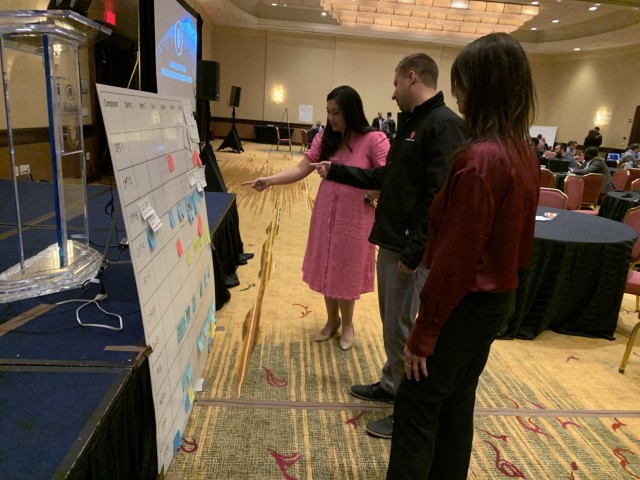The pace of technological advances and the evolving threat require the Army to accelerate how it delivers capability. Program Executive Office Intelligence, Electronic Warfare and Sensors (PEO IEW&S) is leading the way with its employment of the Adaptative Acquisition Framework (AAF) to tailor the acquisition of Army programs to maximize process efficiencies and get critical capability into the hands of the warfighter as soon as possible.
At the core of this framework, is an agile development process that provides the ability to rapidly and iteratively deliver software capability. This is done by tailoring program strategies, oversight, decision reviews, and decision levels based on a capability’s characteristics like complexity, risk, or users’ urgency. PEO IEW&S is demonstrating how the Army is successfully implementing the AAF and its Software Acquisition Pathway through the Joint Common Access Platform (JCAP) effort.
JCAP is a software platform supporting the U.S. Cyber Command’s offensive, defensive, and mission support teams. It gives the Cyber Mission Forces across the Army, Navy, Air Force, and Marines the ability to deliver cyber effects when conducting offensive missions. It will serve as a key component of a larger system of systems concept known as the Joint Cyber Warfighting Architecture (JCWA). JCAP Program Manager, Wayne Field, explains, “JCAP is critical to the modernization of the Joint Forces employment of Cyber Warfare, as it converges cyberspace operations to a single platform that will be integrated with JCWA. This will not only simplify users’ workflow to improve mission effectiveness, but enable more effective data discovery, sharing, and collaboration across the enterprise.”
JCAP’s agile process implements quarterly program increment planning cycles, and two-week development sprints that yield Minimum Viable Capability Releases (MVCR) or Minimum Viable Products (MVP). Incremental planning events provide an opportunity for the user community, developers, program stakeholders, the program management team, and other acquisition stakeholders to come together face-to-face to plan and prioritize what software features will be developed during the next quarterly program increment. “We enable rapid deployment of cyber capabilities with the agile software development process. The process allows for continuous collaboration where our development teams can sit side by side with users to adapt the development pipeline and prioritize features to combat emerging threats to deliver what’s most important to the mission today,” says Field at the last program increment planning session.
The program’s first MVCR establishing the foundational JCAP infrastructure achieved User Acceptance in October this year. The next two MVCRs will build upon the foundation of the first release increasing the capacity and scalability of JCAP. In addition to the MVCRs, updates to the core microservices are updated frequently and delivery of MVPs that offer new functionality are planned throughout the program increment. Enabled by the AAF and the Software Acquisition Pathway, development and delivery of capability will continue indefinitely as the community assesses users’ needs, threats evolve, and technology continues to advance.
The current JCAP contract, awarded in 2020 to design, develop, deploy, and support the operational cyber infrastructure, is slated to complete in 2024. Future efforts will further accelerate the integration of new or upgraded functionality to expand JCAP capabilities and enable our cyber warfighters to take decisive action to deter and defeat U.S. adversaries.

